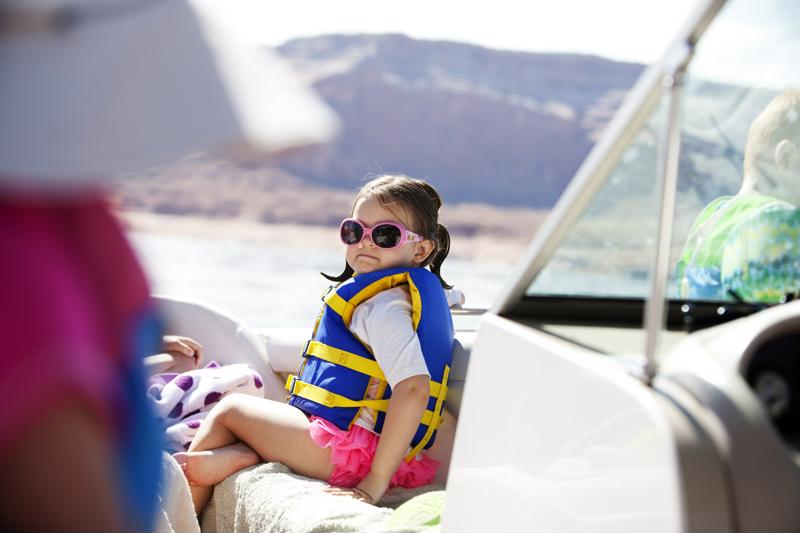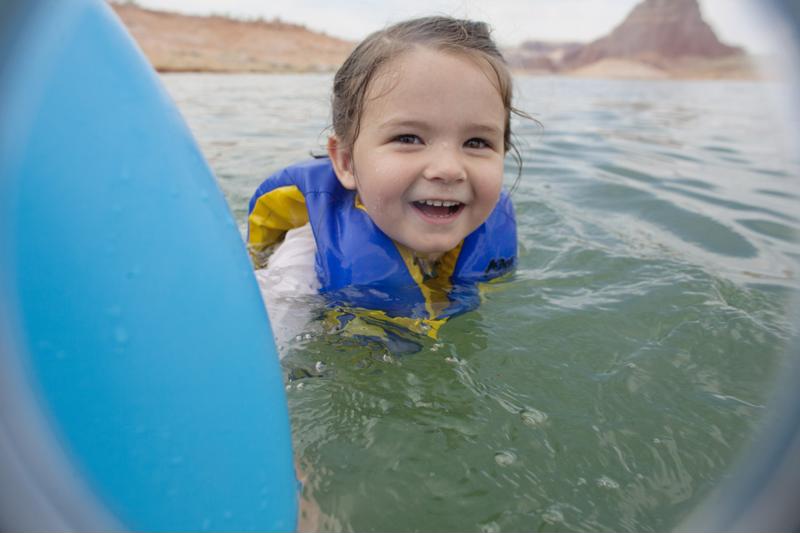Earlier this summer, a neighbor invited my family of four on his speedboat for the afternoon. My initial reaction was to throw up in my mouth a little.
It’s not that I don’t love boating. Back before I had children, boating was right up there with pedicures and milkshakes. But when you’ve got your hands full on land with an infant whose sole mission in life is to climb every object in sight and a toddler who trips over his own feet on a daily basis, it’s hard to imagine having fun at sea as a family – especially when you know the frightening stats on water-related accidents.
According to the U.S. Coast Guard’s 2016 Recreational Boating Statistics summary, boating for fun led to 701 deaths and 2,903 injuries last year. The Centers for Disease Control and Prevention noted that drowning is the second most common cause of accidental death in children ages 1-14 and that approximately 50 percent of drownings take place in bodies of natural water such as oceans and lakes.
Fortunately, drowning is preventable.
Knowing that there were steps I could take to prevent my kids from harm, I researched boat safety for kids, secured the necessary supplies and accepted our neighbor’s invitation. The day went off without a hitch, and I’ve felt confident leading my little ducklings out on the water ever since!
From safe boating tips to finding the best life jackets for babies, here is everything you need to know to go boating with your infant:

Is it safe to bring my baby on a boat?
The USCG doesn’t recommend bringing infants on recreational boats as the personal flotation devices on the market may not correctly fit babies weighing less than 17 pounds. If the PFD doesn’t fit properly, it won’t function as it’s intended to, and that can be life-threatening.
If your child weighs less than 17 pounds and you’d like to take him or her onboard, you should test the life jacket in a pool to ensure proper functioning prior to boating.
If your infant weighs 17 pounds or more (my daughter was exactly 17 pounds when we took her on the boat for the first time!), you should still test in a pool prior to boating to be on the safe side.
What are the best life jackets for babies?
Type
The USCG noted that PFDs come in five types; all are suited for different water conditions and situations. Type II PFDs, or near-shore buoyant vests, are best for infants as they generally offer head support to help keep it above water.
Flotation
There are three basic types of PFD flotation: inherently buoyant (foam), inflatable and hybrid (foam and inflatable). While adults can choose any of the three, only the inherently buoyant models are available in infant size.
Fit
When it comes to life jackets, size does matter. To function as intended, the PFD must fit snugly. It’s important your child’s ears and chin can’t slip through; to test the fit, grab the shoulders of their PFD and pick your child up. You should also look for a model with a crotch strap, which REI noted helps prevent the PFD from riding up.
Life jackets are available in adult, youth, child and infant sizes. Infant PFDs are made for babies between 8-30 pounds.
Positioning
It’s important to select a life jacket that keeps the child in a stable face-up position with their head above water. Little ones have a tendency to panic and struggle, and some styles do a better job of keeping kids afloat and in the correct position than others. Test a few in a pool until you find one that works for your child.
Color
Choose a brightly colored PFD – or one with a bright pop of color (yellow, orange, pink) to help rescuers locate your child in the event of an emergency.

When should we put on our life jackets?
We all know someone who refuses to wear a life jacket. And then there are those friends who only put on their personal flotation devices when the boat begins picking up speed. Either move could be deadly. According to the USCG, 90 percent of drownings occur in inland waters. The majority of victims were not wearing a PFD at the time of their death.
Every person on the boat must have an appropriately-sized PFD available to him or her.
Adults should put their life jackets on before the boat begins moving. Babies and children should be wearing a PFD any time they are on the boat – even if it’s docked and the motor’s off, and even if they know how to swim. The one exception to this rule is if the child is below deck in an enclosed cabin. However, even if your little one is safely below deck, don’t take your eyes off him or her even for a second. In the time it takes you to wash your hands, your infant could crawl up the few stairs onto the deck.
For a list of USCG-approved personal flotation devices, search this database by the keyword “infant” or “child.”
